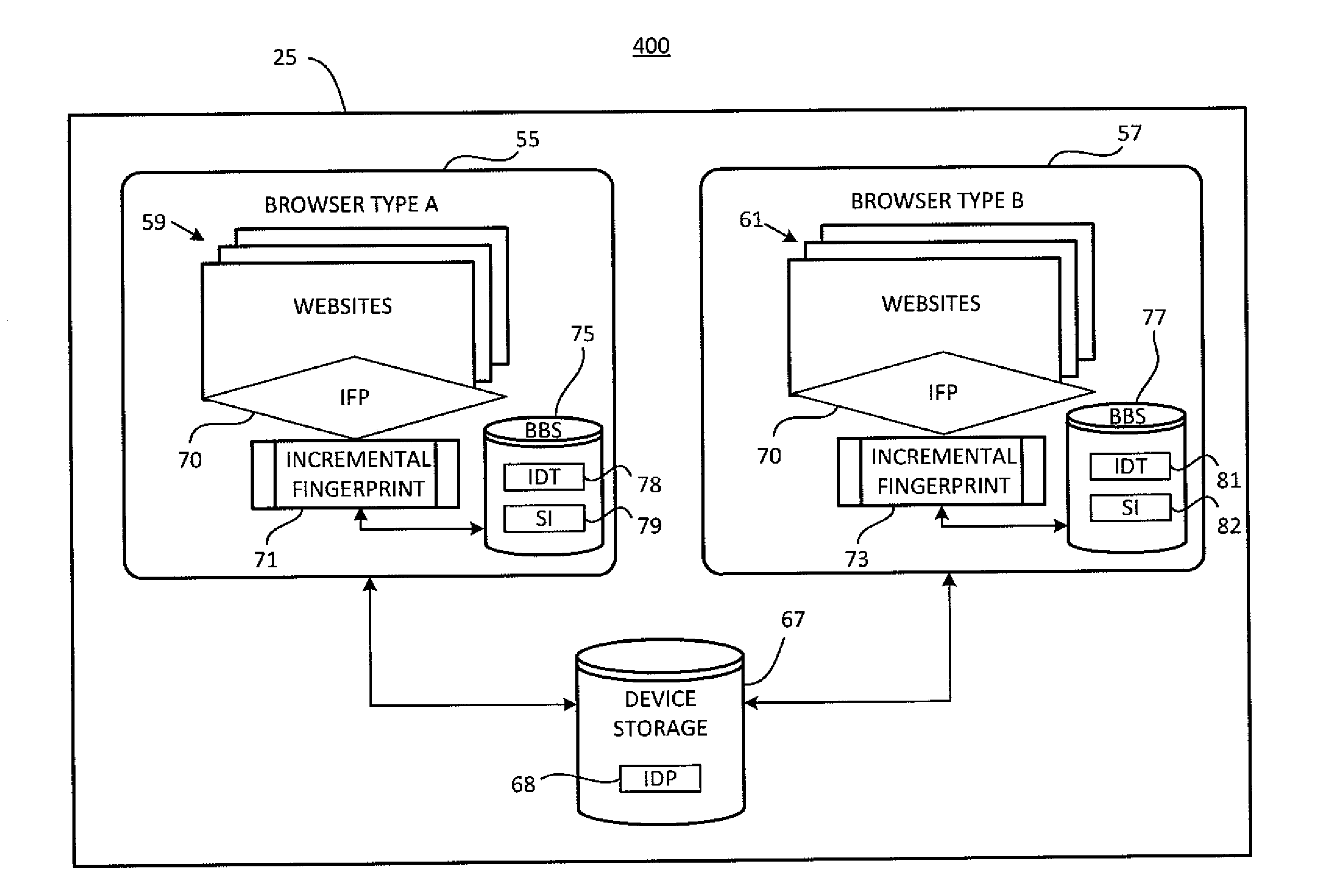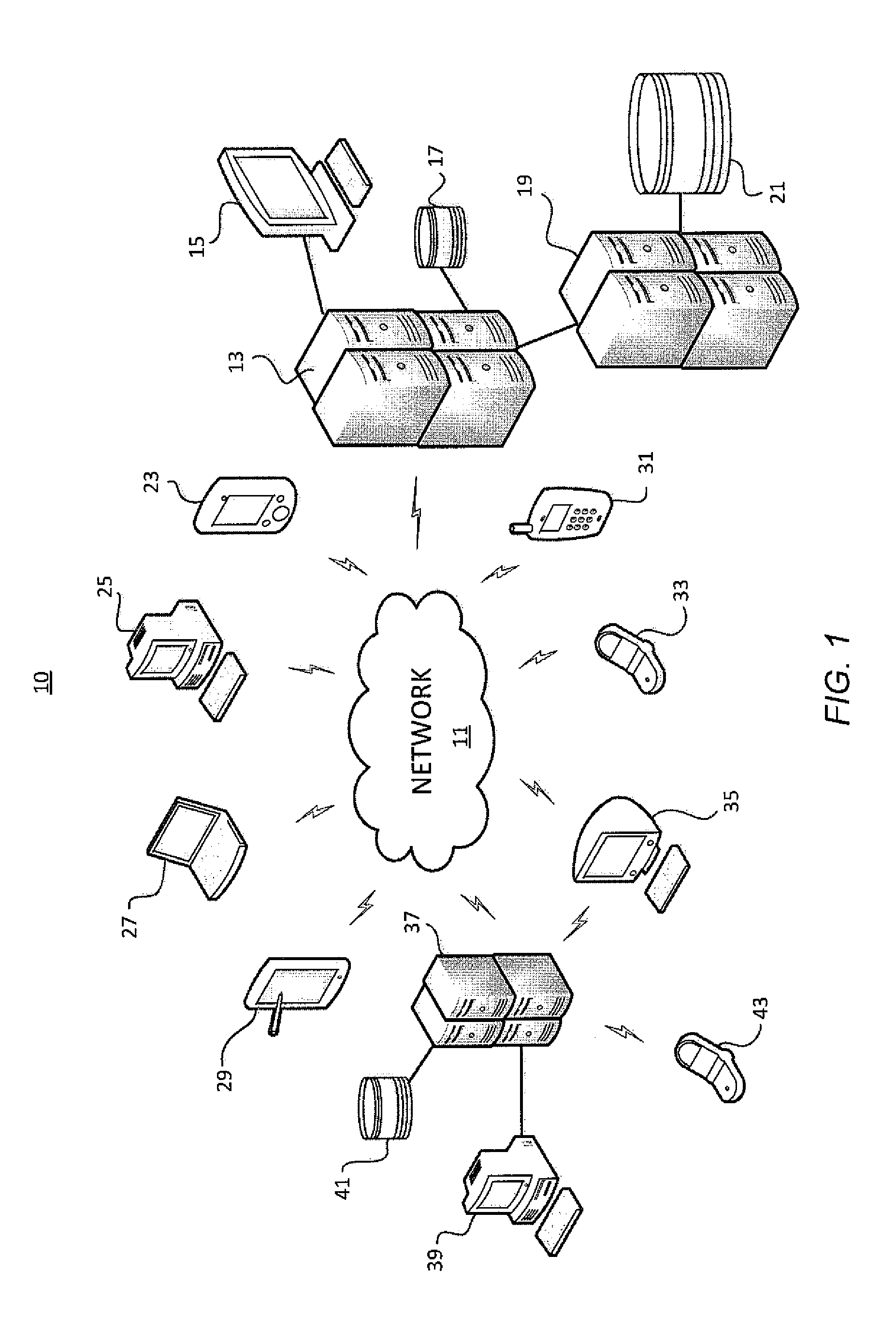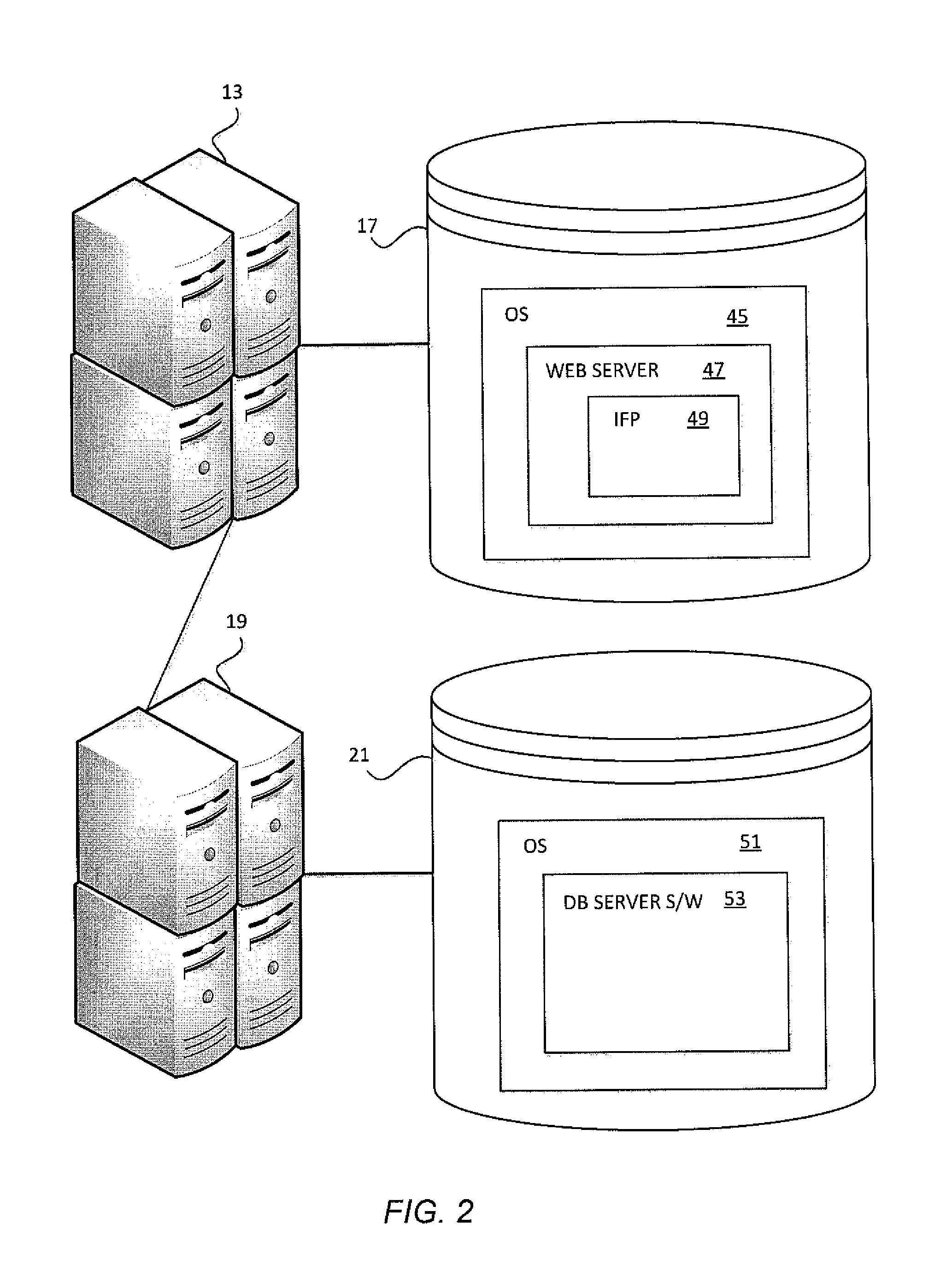Incremental browser-based device fingerprinting
a browser-based device and fingerprinting technology, applied in the field of increasing browser-based device fingerprinting, can solve the problems of affecting the experience of visitors, affecting the user experience, and taking a long time to collect all indicators,
- Summary
- Abstract
- Description
- Claims
- Application Information
AI Technical Summary
Benefits of technology
Problems solved by technology
Method used
Image
Examples
Embodiment Construction
[0023]The present invention provides a method for fingerprinting a computing device in a stages using information obtainable from a special computer program running within a browser of the computing device. The invention discloses an incremental browser-based fingerprinting program that typically runs while the computing device is downloading a web page. The program avoids causing prolonged loading delays by providing the capability for distributing the total execution time needed to extract a complete set of fingerprinting metrics over multiple browsing sessions.
[0024]Within the scope of the invention, computing devices that may be uniquely identified with a device fingerprint include any device capable of receiving resources remotely through a network connection. FIG. 1 illustrates many such devices connected in a modern network communications system 10. System 10 represents but one example of a network within which the present invention may be practiced.
[0025]System 10 at its cen...
PUM
 Login to View More
Login to View More Abstract
Description
Claims
Application Information
 Login to View More
Login to View More - R&D
- Intellectual Property
- Life Sciences
- Materials
- Tech Scout
- Unparalleled Data Quality
- Higher Quality Content
- 60% Fewer Hallucinations
Browse by: Latest US Patents, China's latest patents, Technical Efficacy Thesaurus, Application Domain, Technology Topic, Popular Technical Reports.
© 2025 PatSnap. All rights reserved.Legal|Privacy policy|Modern Slavery Act Transparency Statement|Sitemap|About US| Contact US: help@patsnap.com



